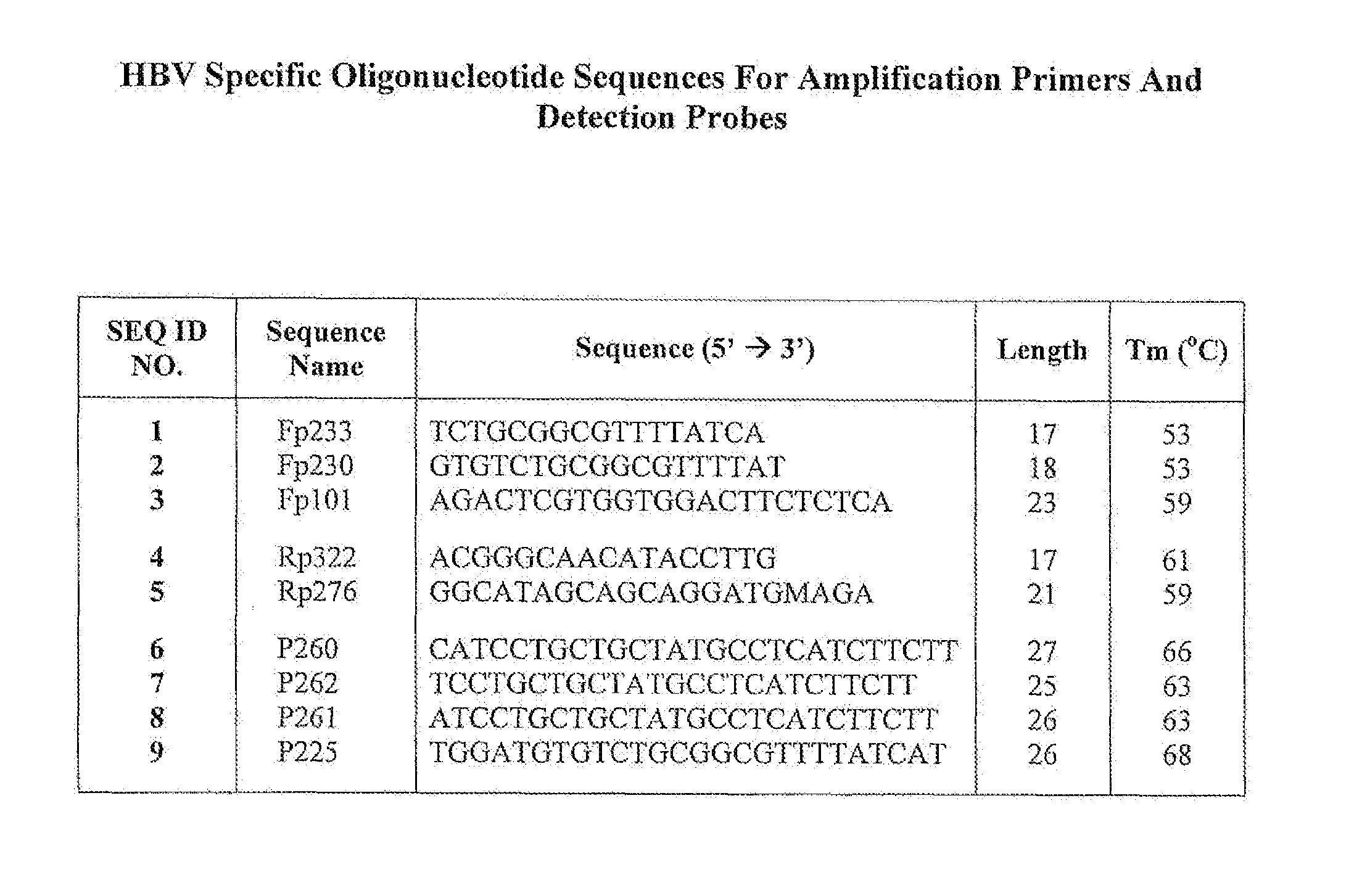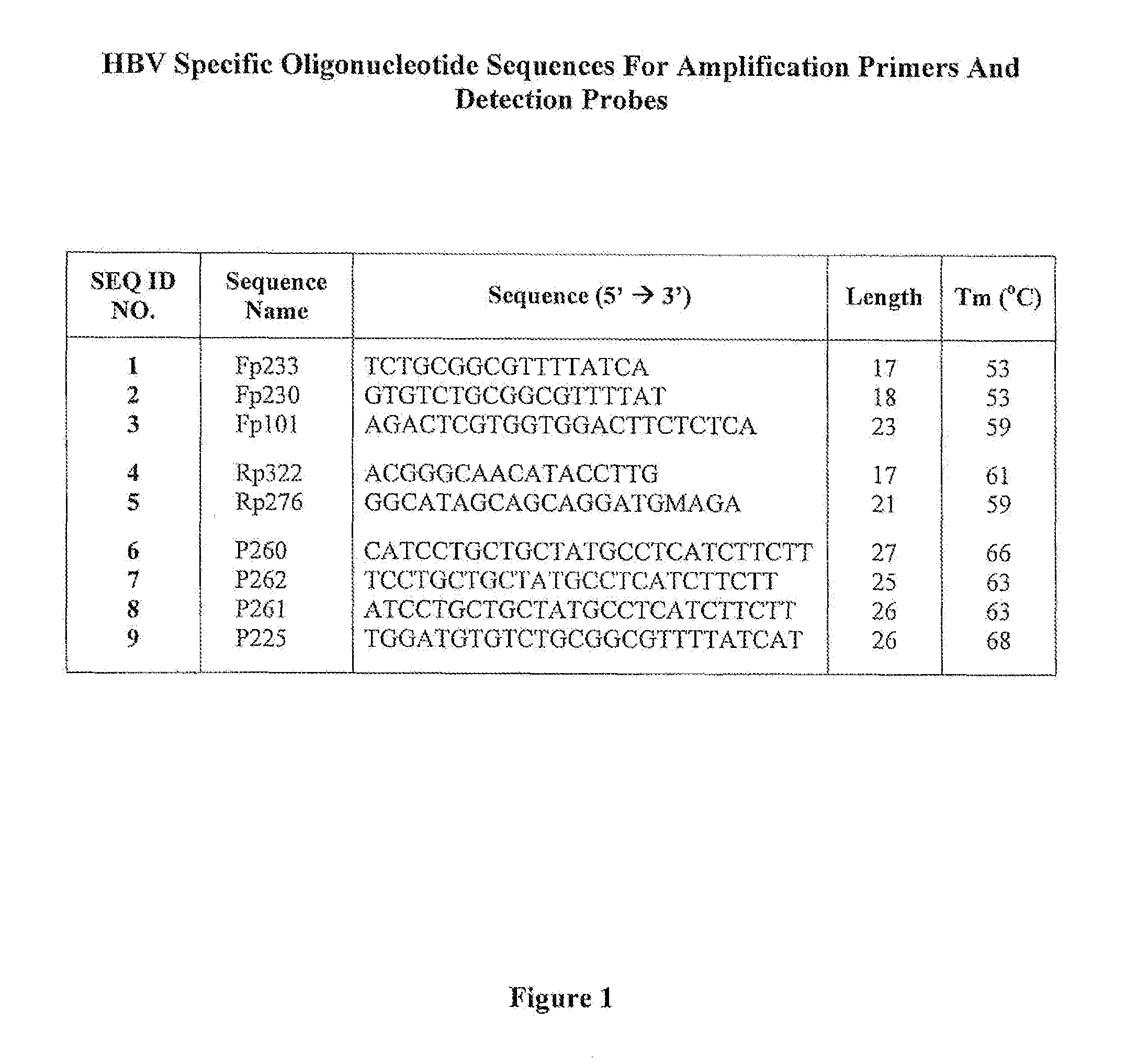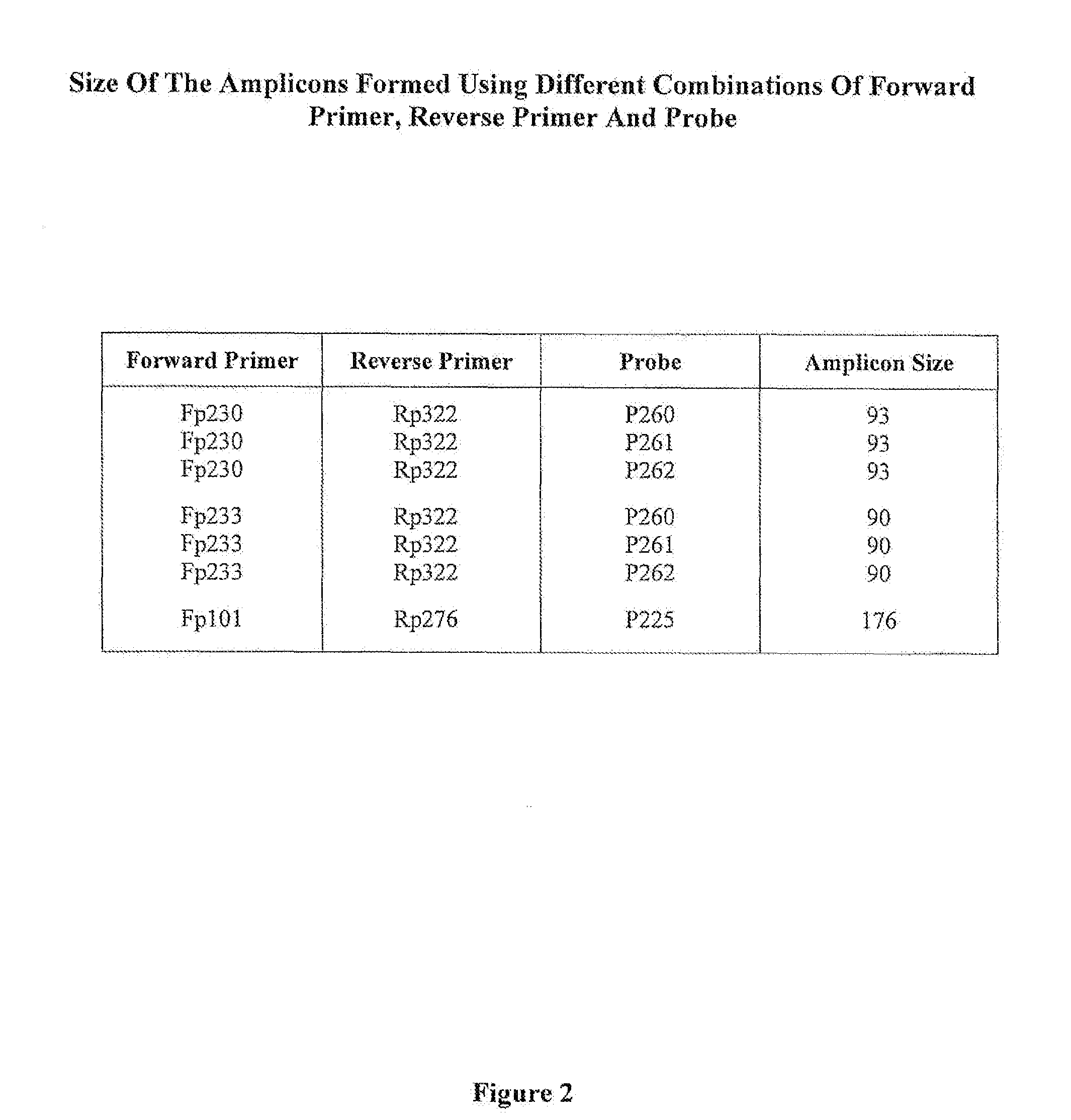Hepatitis B Virus (HBV) Specific Oligonucleotide Sequences
a technology specific oligonucleotide sequence, which is applied in the field of hepatitis b virus (hbv) specific oligonucleotide sequence, can solve the problems of chronically infected patients' complete eradication of the virus, none of the currently available treatments, and global public health problems, and achieves rapid, selective and specific detection and quantification, and wide range of quantification effects
- Summary
- Abstract
- Description
- Claims
- Application Information
AI Technical Summary
Benefits of technology
Problems solved by technology
Method used
Image
Examples
example 1
Genotype Equivalence
[0163]To demonstrate that the inventive oligonucleotide sequences recognize all eight genotypes of HBV, genotype equivalence was assessed using 15 plasmid DNA representing 8 HBV genotypes. Two isolates of each of the 7 HBV genotypes A-G and 1 isolate of genotype H were tested at a low level of 1000 DNA copies per PCR reaction and a high target concentration of 1,000,000 DNA copies per PCR reaction. Copy number for each HBV genotype plasmid sample was determined using the Versant HBV DNA 3.0 Assay (bDNA assay). Each genotype sample was tested using five replicates. These samples were tested across 2 runs with 96 specimens tested in each run. Results obtained are presented on FIG. 3. They show that genotypes B-H were quantitated on average within ±0.5 log relative to genotype A.
example 2
Linearity and Detection Limits
[0164]Determination of quantitation linear range and detection limits (LoD) of oligonucleotides of the present invention was performed using HBV recombination DNA fragments (rDNA) as target. HBV rDNA was quantitated by phosphate analysis. Results of linearity detection are presented on FIG. 4 and FIG. 5. Since one would expect |log diff| to be ≦0.1 and % CV to be as small as possible, the linear range can be determined to be from 10 copies per reaction to 1×109 copies per reaction. Results of the determination of detection limits are presented on FIG. 6 and FIG. 7. LoD was determined to be 4.27 copies per reaction.
example 3
Specificity
[0165]No cross-hybridization was observed with HIV, as was demonstrated by testing 108 copies per PCR reaction of HIV transcript and 6 HIV positive clinical specimens. Similarly, no cross-hybridization was observed with HCV. Three hundred (300) unique HBsAg negative specimens, representing 150 serum and 150 EDTA plasma samples were tested to evaluate assay specificity. The final specificity was 100% (based on N=300) with lower one-sided 95% confidence limit equal to 99.01%.
PUM
| Property | Measurement | Unit |
|---|---|---|
| Digital information | aaaaa | aaaaa |
| Digital information | aaaaa | aaaaa |
| Fluorescence | aaaaa | aaaaa |
Abstract
Description
Claims
Application Information
 Login to View More
Login to View More - R&D
- Intellectual Property
- Life Sciences
- Materials
- Tech Scout
- Unparalleled Data Quality
- Higher Quality Content
- 60% Fewer Hallucinations
Browse by: Latest US Patents, China's latest patents, Technical Efficacy Thesaurus, Application Domain, Technology Topic, Popular Technical Reports.
© 2025 PatSnap. All rights reserved.Legal|Privacy policy|Modern Slavery Act Transparency Statement|Sitemap|About US| Contact US: help@patsnap.com



